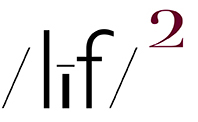All photos ~ (embiggenable)
“I always thought good photos were like good jokes. If you have to explain it, it just isn’t that good.” ~ Anonymous
IF IT IS NOT OBVIOUS, LET ME NOTE THAT I RARELY caption or title my photographs, neither on this blog, in my photo books, nor in an exhibition. My primary reason for this omission was, coincidentally, explained in an essay by Lincoln Kirstein in the book Walker Evans ~ American Photographs–a reproduction, page by page / spread by spread–of Evans’ original book as published in 1938:
“The scheme of picture titles [left] only the page numbers as minimal distraction to the images …. Without the title’s immediate juxtaposition to the images, the viewer was obliged to fashion his or her own synopsis of the pictures’ content and form. This was another Evans’ impulse to purge all editorial comment from his work. Even his perfunctory titles were bare notations of place and date.”
I have always believed that, cuz the medium of photography is a visual art, words are not necessary. Some even believe that, if words are necessary, a photograph is a failure. That is a bit extreme but I believe a photograph should stand on its own visual merits. In addition, for what it’s worth, I also believe that “cutesy” captions / titles should be eradicated from the face of the earth.
All of the above written, my photo books and exhibition photographs are nevertheless always accompanied by an artist statement. The statements are written as a rather short and sweet synopsis of my picture making intent. Consider the artist statement for my An Adirondack Survey work:
“My photographs are visual analogues for the quality of my life, a private view of subject matter found in the commonplace realities of the Adirondacks. An Adirondack Survey, created as an engagement of personal vision rather than as a topographic documentary, illustrates my intent to animate, elucidate, and reveal a sense of beautiful strangeness. That is, not predictability (the opposite of cliche), but rather a kind of shock non-recognition hidden in plain sight within the quotidian landscape of the Adirondacks.”
In a very real sense, this statement, with a substitution of the title of any of my bodies of work in place of “An Adirondack Survey”, could be used as the artist statement for any of my bodies of work. I believe that to be true inasmuch as none of my bodies of work, with the exception of my Life Without the APA work, were undertaken to infer / connote any particular social / cultural commentary or intellectual concept; they exist as a simple visual statement from which a viewer may experience any reaction that suits their fancy.
That written, far be it from me to suggest with words what a viewer should experience when viewing my photographs.
